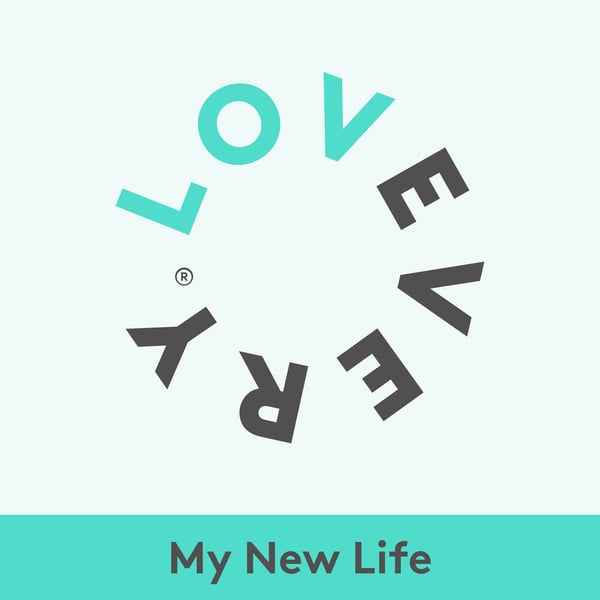Executive function: Flexible thinking
My New Life
Kate Garlinge
4.7 • 654 Ratings
🗓️ 20 March 2024
⏱️ 24 minutes
🧾️ Download transcript
Summary
Have you ever played “hot/cold” with your child? It’s good for a laugh, particularly when a child can’t find something in plain sight. But it’s also great at teaching young children flexible thinking, or the ability to adapt to change. As they are searching for the lost item, they are listening to directions and staying flexible when they have to change course.
In this series on executive function, we’ve been looking at ways to help our children build these skills, which include working memory, impulse control and cognitive flexibility. These mental tasks take practice and must be learned and relearned. All the while, you’re laying the foundation for school-age success. Joining Host Jessica Rolph to explain the neuroscience behind flexible thinking is Dr. Stuart Marcovitch, a professor in the Department of Psychology at UNC Greensboro.
Takeaways:
-
While routines help children know what to expect, you can start mixing up the routine a bit at age 4. It gives your child an opportunity to practice flexible thinking. Maybe you brush teeth and then take a bath, instead of the other way around.
-
Games like the Lovevery Reach for the Stars Matching Cards — where you sort by shape, and then code switch to sort the same cards by color — are great for building flexible thinking.
-
Offering children choices is another cognitive flexibility technique, because it allows them to consider various alternatives simultaneously. Stuart recommends offering choices while cooking with your child: Do you want to cut the carrots into rounds or slice them into sticks?
Mentioned in this episode:
Brought to you by Lovevery.com
Receive weekly emails about your child’s development, and stay in the know about new play essentials, promos, and more by signing up at Lovevery.com
Follow Lovevery and Jessica Rolph on Instagram
Transcript
Click on a timestamp to play from that location
| 0:00.0 | Welcome to My New Life, a love every podcast. I'm your host, Jessica Rolf. |
| 0:10.5 | This mini-series helps us more deeply understand the importance of executive function skills, the principles around which we designed are four-year-old playkits. |
| 0:21.3 | Have you ever played hot, cold with your child? |
| 0:24.5 | It's a favorite in our house, |
| 0:26.4 | particularly when one of my children can't find something in plain sight. |
| 0:30.8 | But it's also great at teaching young children flexible thinking |
| 0:33.9 | or the ability to adapt to change. |
| 0:36.9 | As they're searching for the lost item, |
| 0:38.9 | they're listening to directions and staying flexible when they have to change course. |
| 0:43.5 | In this series on executive function, we've been looking at ways to help our children build |
| 0:48.4 | these skills, which include working memory, impulse control, and cognitive flexibility. |
| 0:56.3 | These mental tasks take practice and must be learned and relearned, all the while laying the foundation for school-age success. |
| 1:02.3 | Here to explain the neuroscience behind flexible thinking is Dr. Stuart Markovich, a professor |
| 1:08.0 | in the Department of Psychology at UNC Greensboro. Welcome, Stuart. Thank you for having me. |
| 1:13.9 | I look forward to this. It's so great being here with you. So talk to us. How do you measure a child's |
| 1:19.8 | cognitive flexibility in your lab? We have several ways of doing it, but the most popular way to do it in the field is through a card game that was popularized by my graduate advisor, Dr. Phil Zelazzo. |
| 1:34.3 | In this game, we show children cards of a specific color in shape, say a red star or a blue circle. |
| 1:43.3 | And we have them sort the cards based on one of those dimensions, |
| 1:47.1 | say color. So all the red cards go in one place, all the blue cards go in another place. And to help |
| 1:52.4 | them, we show them a target card that matches on one dimension from each card. So we have a red star |
| 1:58.7 | in a blue circle. We showed them a red circle. |
| 2:01.2 | So they're putting all the red stars with the red circle and all the blue cards go together |
... |
Please login to see the full transcript.
Disclaimer: The podcast and artwork embedded on this page are from Kate Garlinge, and are the property of its owner and not affiliated with or endorsed by Tapesearch.
Generated transcripts are the property of Kate Garlinge and are distributed freely under the Fair Use doctrine. Transcripts generated by Tapesearch are not guaranteed to be accurate.
Copyright © Tapesearch 2025.

